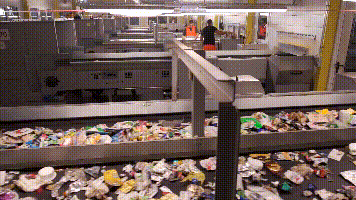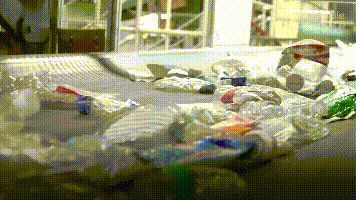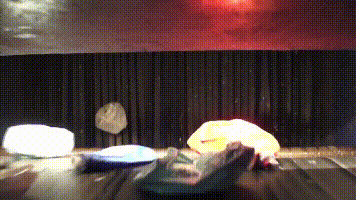100T/D Waste to SRF Project
By MSWsorting
Our earth is now faced with a variety of growing wastes. How to effectively utilize these wastes, Waste-to-SRF has become more and more practical in recent years. How to convert solid waste into solid recovered fuel, which requires a series of processing steps, including but not limited to: collection, screening, removal and recovery of metals, removal of organic waste, removal of inert inorganic waste, sorting of heavy materials, drying, and finally Shred high calorific value light waste to a certain size, usually less than 50mm, so that high-standard SRF can be supplied to waste-to-energy plants, cement plants or other factories that require SRF as fuel.
Waste Sorting

Converts waste to fuel, reducing landfill waste.
Extracts valuable resources from waste for reuse.
Used as fuel in industrial processes, reducing reliance on fossil fuels.
Lessens greenhouse gas emissions compared to fossil fuels.
Creates jobs and business opportunities while saving costs.
Helps meet waste management regulations.
Supports resource reuse and recycling.
Encourages better waste handling practices.
Objective: Gather and preliminarily sort waste.
Objective: Remove large, non-combustible, and hazardous items.
Objective: Separate materials by size to ensure consistent fuel quality.
Objective: Separate materials based on density to remove non-combustibles.
Objective: Remove ferrous and non-ferrous metals.
Objective: Enhance fuel quality by removing remaining contaminants.
Objective: Reduce waste particle size to facilitate further processing and improve combustion properties.
Objective: Reduce moisture content to improve combustion efficiency.
Objective: Convert processed material into a uniform fuel format.
Objective: Ensure the final SRF meets required standards for calorific value, moisture content, and contaminant levels.
Objective: Safely store and transport SRF to end-users.

For countries with low labor costs, a combination of mechanical and manual sorting can be used, which is a cost-effective waste sorting and recycling solution.
Read More
The artificial intelligence sorting robot with autonomous learning can practice and accumulate sorting data. It can effectively sort various high-value recyclables.
Read More
Optical sorter is a automatic sorting device based on sensors, high-speed ejector valve has large processing capacity. It is a good choice for bulk handling project of waste recycling.
Read MoreChina leading waste sorting plant solutions provider. have had more than 30 years experiences in waste recycling industry. Domestic Market have 10 Million Ton wastes per year recycling by MSWsorting equipment
China's first waste sorting machine manufacturer and pioneer. many official bodies are our client, it's strict procurement process can prove our product quality and service.

Export to 20+ countries

50+ Employees

Patent for Invention

Project Cases
Bin feeding systems have good input performance
Waste Conveying Systems OEM design is available
Double Shaft Shredding Systems, output size less than 300mm
Sorting and rycycling iron metal from mixted materials
Eddy-Current Separation can get Copper, Aluminum metals
Ballistic separating systems can sorting 2D and 3D materials
Air Sorting Systems can separating lightweight and heavy materials
Separating oversize waste and undersize food waste
For packing recyclables (plastic and paper)
Recycling high-value waste products from municipal solid waste: paper, plastic, iron, copper, aluminum and other non-ferrous metals. If you have higher sorting requirements, our sorting system can add optical sorting systems and Eddy-Current Separation to recycle waste products such as PET bottles, PVC plastic, single material etc.
The composting method for the treatment of domestic waste refers to the method of decomposing organic matter in domestic waste and decomposing it into a stable humus-like soil under the conditions of the biochemistry of microorganisms. It can be divided into two kinds: anaerobic fermentation and aerobic fermentation.
RDF is an abbreviation for Refuse Derived Fuel. It has the characteristics of high calorific value, stable combustion, easy transportation, easy storage, low secondary pollution, and low emission of dioxins. It is widely used in drying engineering and cement. Manufacturing, heating engineering and power generation engineering.
Sorting and Recycling Solution include from waste feeding systems to baling systems
This solutions include composting equipment for food & organic waste except sorting equipment
Provide RDF/SFR making and drying equipment after sorting and recycling sytems